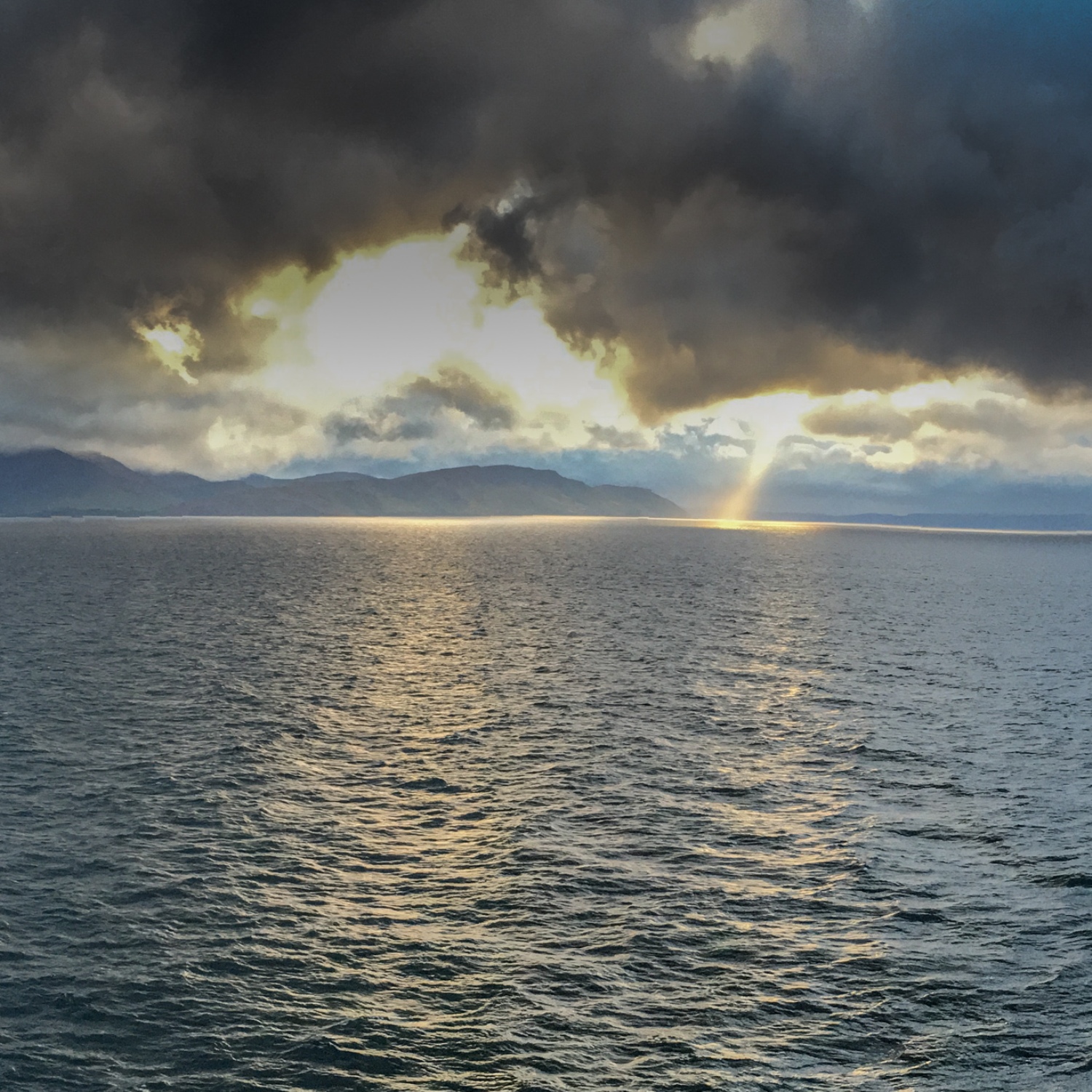A shaft of bright light burst through thick cloud to strike the Firth of Clyde, on the west of Scotland, as Adam Bridge (Member 54,404) pulled out on a cruise ship from Greenock. This part of Scotland’s no stranger to heavy cloud, especially this Stratocumulus stratiformis formation, which happens to be the most common cloud in the world.
That’s because Stratocumulus stratiformis forms over huge stretches of the world’s oceans. It is recognisable by its well-defined, low, clumpy base and its range of different tones. These result from the tendency of this cloud to have a great variety of thickness. The parts that rise in tall mounds above look a dark grey tone below. Those that are more like valleys above appear bright white below, as more sunlight can shine through.
This cloud’s characteristic variety in thickness is also why it’s the classic formation for producing shafts of sunlight, or crepuscular rays, like this: thick parts block the light, gaps between them let beams shine down, and a light sea mist does the rest.



